The DJI Mavic 3 Has Arrived at Long Last
BY Zacc Dukowitz
5 November 2021Finally, after years of rumors and anticipation, DJI has released the Mavic 3.
The Mavic 3 launch is the last of three promised product launches from DJI that have taken place over the last three weeks under the tagline “Good things come in threes.” The first product was the Ronin 4D camera system, the second was the Action 2 camera, and today marks the third and, for most in the drone industry, the biggest: the Mavic 3.
DJI’s new drone starts at $2,200, which is a significant price hike from the $1,600 that the Mavic 2 Pro sells for. But that higher price comes with two different camera systems as well as a host of new features—keep reading to learn more about the DJI Mavic 3.
DJI Mavic 3 Specs
The Mavic 3 is a lightweight, highly portable prosumer drone that comes with two high-quality cameras. Big picture, almost every aspect of it has been upgraded from the Mavic 2 Pro.
One of the biggest upgrades in the new drone is that its flight time has increased by almost 50%—it can fly for 46 minutes, 15 minutes longer than the Mavic 2 Pro’s 31 minutes.
Battery life is a constant source of pain for drone pilots, and this longer life, coupled with the Mavic 3’s two cameras, could make it a go-to option for the higher end of the prosumer drone market.
Here are the most important specs for the Mavic 3:
- Two cameras. A Hasselblad camera with a 4/3″ sensor and a Tele camera with a 1/2″ sensor.
- Weight. 1.97 pounds (895 grams)—just a little less than the Mavic 2’s 1.99 pounds (907 grams).
- Flight time. 46 minutes—a big upgrade from the 31 minutes you get with the Mavic 2 Pro or the Air 2S.
- Speed. 47 mph—just a slight uptick from the Mavic 2 Pro’s 45 mph.
- Range. 9.3 miles (15km)—almost double the 4.98 (8km) range of the Mavic 2 Pro.
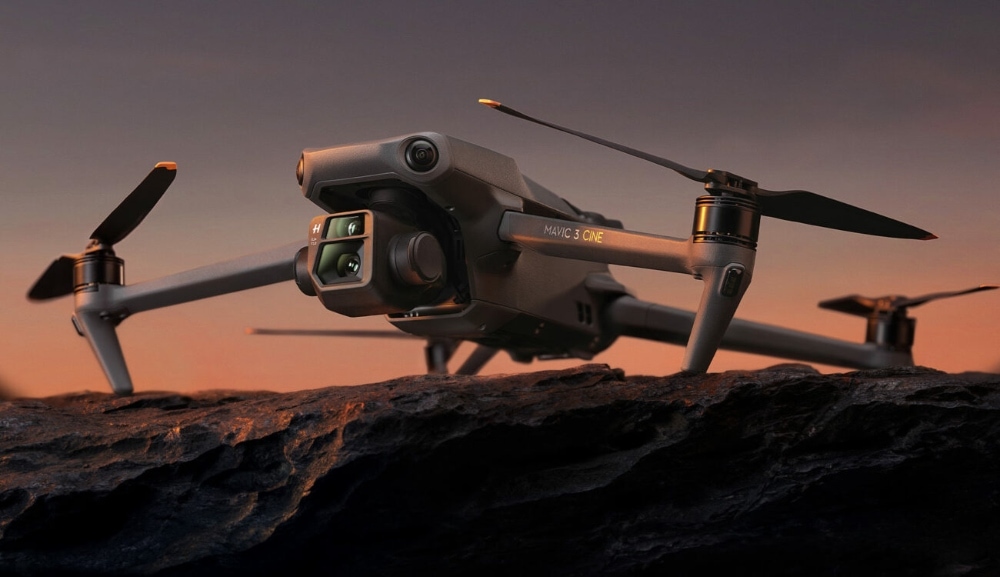

Photo credit: DJI
Here are some standout new features you’ll find on the Mavic 3:
- Advanced RTH (Return to Home). New feature that gets the drone back to you more quickly and in a more power-efficient manner, primarily by going over obstacles instead of around them. According to DJI, it can even read wind conditions to calculate the best route back.
- Omnidirectional collision avoidance. A new APAS 5.0 system uses the drone’s eight visual sensors to improve its obstacle avoidance.
- Advanced tracking. Active Track 5.0 can follow subjects better than ever, even in congested or hard-to-navigate areas like forest.
- Natural Color Solution. A feature in the Hasselblad camera that lets you get colors that are deeper and more accurate than have been possible in the past.
- New controller. The Mavic 3 comes with a new DJI RC Pro smart controller.
- QuickTransfer. Allows you to offload footage quickly using WiFi 6.
- Transmission speed. According to DJI, the Mavic 3 is the first drone ever with 1080p 60fps transmission speed on its live feed. In DJI’s words, this means that “the camera view is displayed at a resolution close to what the camera actually records.”
- 100-MP Panorama mode. New to the Mavic 3, this will help you capture even better panoramas.
About the Two Cameras
The two cameras that come with the Mavic 3 are one of its primary selling points. Here’s a little more information on each one:
The Hasselblad Camera
The primary Hasselblad camera that comes with the Mavic 3 was designed in partnership with DJI—here are its primary specs:
- 4/3″ sensor—larger than the 1″ sensor you get with the Air 2S
- 24mm (35mm-equivalent) f/2.8 – f/11
- 5.1K video at 50fps or 4K at 120fps
- 20 MP still images
- Dynamic range of 12.8 stops
- Uses Apple ProRes 422 HQ
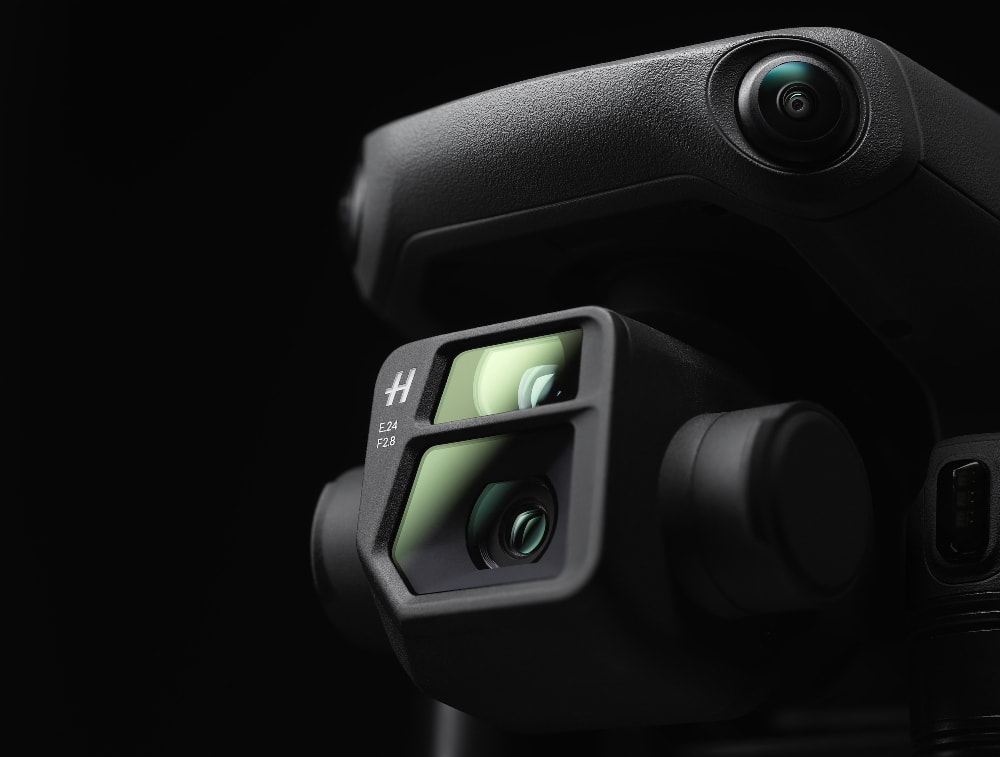

Photo credit: DJI
The Tele Camera
The telephoto camera lets you zoom in for closeup shots—here are its primary specs:
- 1/2″ sensor
- 162mm tele lens (35mm equivalent) f/4.4
- 4x zoom / 28x hybrid zoom
- 4K video at up to 30fps
- 12 MP still images
- 4x digital zoom


Watch this video on YouTube
Two Models
The Mavic 3 comes in two different models—the Standard and the Cine.


Photo credit: DJI
You can buy the Standard model on its own for $2,199 or as part of a Fly More combo for $2,999. The Cine model can only be purchased as part of a Premium combo, which is selling for $4,999.
The biggest difference between the Mavic 3 Standard and the Mavic 3 Cine is that the Cine:
- Has 1 TB of memory—compared to 8GB in the Standard version
- Comes with a 10 GBps Lightspeed Data Cable
- Has the ability to record with the Apple’s ProRes 422 HQ code
- Is slightly heavier (it’s only a difference of 4 grams, or .009 of a pound)
- Comes with a new RC Pro remote controller
Here’s what you get with each of the three options:
1. Standard
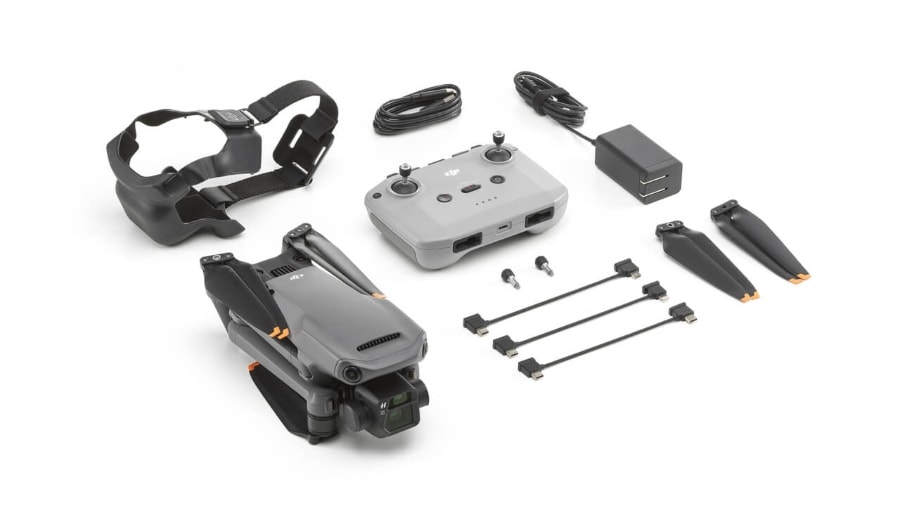

Photo credit: DJI
Here’s an overview of what you get with the DJI Mavic 3 Standard:
- DJI Mavic 3
- New RC-N1 remote controller
- 1 intelligent flight battery
- 1 65W portable charger
- 1 storage cover
+ several other small supporting accessories, like spare control sticks and cables.
Learn more about the Mavic 3 Standard on DJI’s website.
2. Standard Fly More Combo
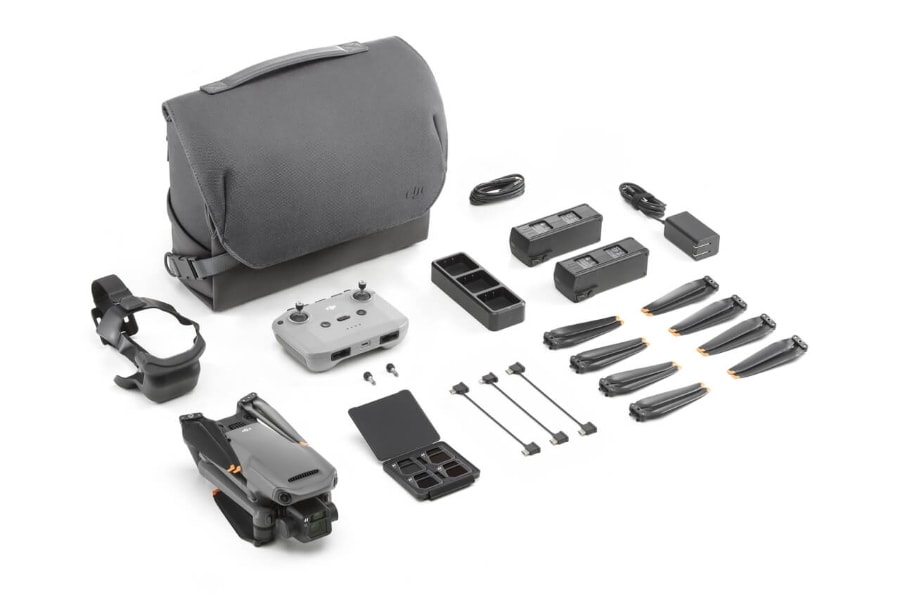

Photo credit: DJI
Here’s an overview of what you get with the Mavic 3 Standard Fly More Combo:
- All of the above +
- 2 more batteries (total of 3)
- Battery charging hub
- Convertible carrying bag
- 1 set of ND filters (ND4/8/16/32)
Learn more about the Mavic 3 Standard Fly More combo on DJI’s website.
3. Cine Premium Combo
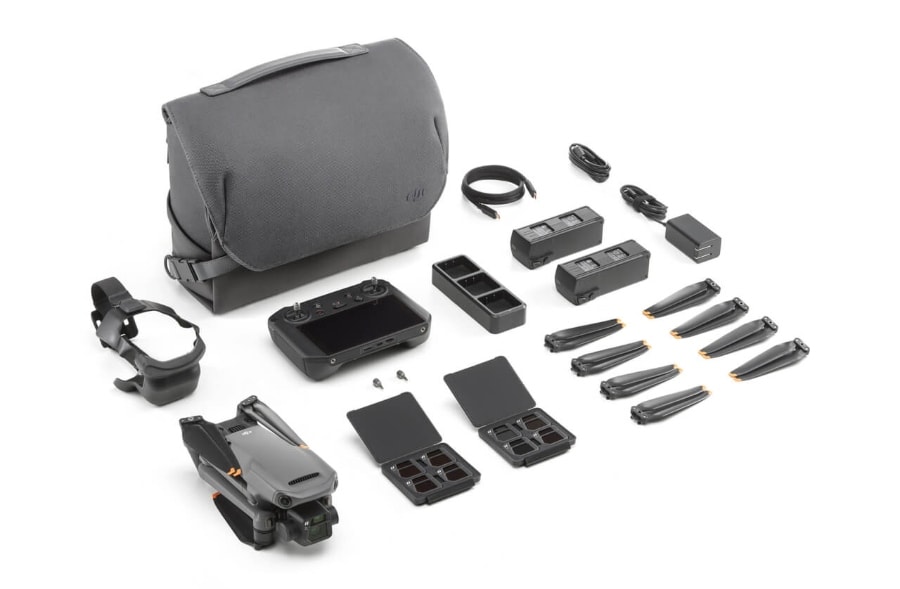

Photo credit: DJI
Here’s an overview of what you get with the Cine Premium Combo:
- Mavic 3 Cine
- 3 batteries
- 2 sets of ND filters
- Convertible carrying bag
- Portable charger
- The upgraded RC Pro remote controller
+ some extra sticks, cables, and propellers


